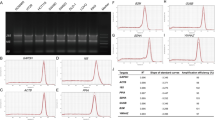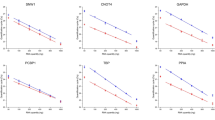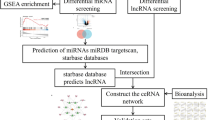Abstract
The human lymphocyte toxins granzyme B (hGrzB) and perforin cooperatively induce apoptosis of virus-infected or transformed cells: perforin pores enable entry of the serine protease hGrzB into the cytosol, where it processes Bid to selectively activate the intrinsic apoptosis pathway. Truncated Bid (tBid) induces Bax/Bak-dependent mitochondrial outer membrane permeability and the release of cytochrome c and Smac/Diablo. To identify cellular proteins that regulate perforin/hGrzB-mediated Bid cleavage and subsequent apoptosis, we performed a gene-knockdown (KD) screen using a lentiviral pool of short hairpin RNAs embedded within a miR30 backbone (shRNAmiR). We transduced HeLa cells with a lentiviral pool expressing shRNAmiRs that target 1213 genes known to be involved in cell death signaling and selected cells with acquired resistance to perforin/hGrzB-mediated apoptosis. Twenty-two shRNAmiRs were identified in the positive-selection screen including two, PCAF and ADA3, whose gene products are known to reside in the same epigenetic regulatory complexes. Small interfering (si)RNA-mediated gene-KD of PCAF or ADA3 also conferred resistance to perforin/hGrzB-mediated apoptosis providing independent validation of the screen results. Mechanistically, PCAF and ADA3 exerted their pro-apoptotic effect upstream of mitochondrial membrane permeabilization, as indicated by reduced cytochrome c release in PCAF-KD cells exposed to perforin/hGrzB. While overall levels of Bid were unaltered, perforin/hGrzB-mediated cleavage of Bid was reduced in PCAF-KD or ADA3-KD cells. We discovered that PCAF-KD or ADA3-KD resulted in reduced expression of PACS2, a protein implicated in Bid trafficking to mitochondria and importantly, targeted PACS2-KD phenocopied the effect of PCAF-KD or ADA3-KD. We conclude that PCAF and ADA3 regulate Bid processing via PACS2, to modulate the mitochondrial cell death pathway in response to hGrzB.
Similar content being viewed by others
Log in or create a free account to read this content
Gain free access to this article, as well as selected content from this journal and more on nature.com
or
Abbreviations
- hGrzB:
-
human granzyme B
- tBid:
-
truncated Bid
- KD:
-
knockdown
- MOMP:
-
mitochondrial outer membrane permeabilisation
- IAP:
-
inhibitor of apoptosis protein
- CTLs:
-
cytotoxic lymphocytes
- NK:
-
natural killer cell
- PCAF:
-
p300/CBP associated protein
- ADA3:
-
transcriptional adaptor 3
- PACS2:
-
phosphofurin acidic-cluster sorting-protein 2
- NS:
-
non-silencing
- AB:
-
Alamar blue
- NT:
-
non-targeting
- UV:
-
ultraviolet radiation
- CSP3:
-
caspase-3
- IP:
-
immunoprecipitation
References
Kaiserman D, Bird CH, Sun J, Matthews A, Ung K, Whisstock JC et al. The major human and mouse granzymes are structurally and functionally divergent. J Cell Biol 2006; 175: 619–630.
Kagi D, Ledermann B, Burki K, Seiler P, Odermatt B, Olsen KJ et al. Cytotoxicity mediated by T cells and natural killer cells is greatly impaired in perforin-deficient mice. Nature 1994; 369: 31–37.
Heibein JA, Goping IS, Barry M, Pinkoski MJ, Shore GC, Green DR et al. Granzyme B-mediated cytochrome c release is regulated by the Bcl-2 family members bid and Bax. J Exp Med 2000; 192: 1391–1402.
Barry M, Heibein JA, Pinkoski MJ, Lee SF, Moyer RW, Green DR et al. Granzyme B short-circuits the need for caspase 8 activity during granule-mediated cytotoxic T-lymphocyte killing by directly cleaving Bid. Mol Cell Biol 2000; 20: 3781–3794.
Alimonti JB, Shi L, Baijal PK, Greenberg AH . Granzyme B induces BID-mediated cytochrome c release and mitochondrial permeability transition. J Biol Chem 2001; 276: 6974–6982.
Sutton VR, Davis JE, Cancilla M, Johnstone RW, Ruefli AA, Sedelies K et al. Initiation of apoptosis by granzyme B requires direct cleavage of bid, but not direct granzyme B-mediated caspase activation. J Exp Med 2000; 192: 1403–1414.
Degli Esposti M, Ferry G, Masdehors P, Boutin JA, Hickman JA, Dive C . Post-translational modification of Bid has differential effects on its susceptibility to cleavage by caspase 8 or caspase 3. J Biol Chem 2003; 278: 15749–15757.
Sutton VR, Vaux DL, Trapani JA . Bcl-2 prevents apoptosis induced by perforin and granzyme B, but not that mediated by whole cytotoxic lymphocytes. J Immunol 1997; 158: 5783–5790.
Davis JE, Sutton VR, Smyth MJ, Trapani JA . Dependence of granzyme B-mediated cell death on a pathway regulated by Bcl-2 or its viral homolog, BHRF1. Cell Death Differ 2000; 7: 973–983.
Cullen SP, Adrain C, Luthi AU, Duriez PJ, Martin SJ . Human and murine granzyme B exhibit divergent substrate preferences. J Cell Biol 2007; 176: 435–444.
Lopez JA, Jenkins MR, Rudd-Schmidt JA, Brennan AJ, Danne JC, Mannering SI et al. Rapid and unidirectional perforin pore delivery at the cytotoxic immune synapse. J Immunol 2013; 191: 2328–2334.
Browne KA, Johnstone RW, Jans DA, Trapani JA . Filamin (280-kDa actin-binding protein) is a caspase substrate and is also cleaved directly by the cytotoxic T lymphocyte protease granzyme B during apoptosis. J Biol Chem 2000; 275: 39262–39266.
Martin P, Pardo J, Schill N, Jockel L, Berg M, Froelich CJ et al. Granzyme B-induced and caspase 3-dependent cleavage of gelsolin by mouse cytotoxic T cells modifies cytoskeleton dynamics. J Biol Chem 2010; 285: 18918–18927.
Sebbagh M, Hamelin J, Bertoglio J, Solary E, Breard J . Direct cleavage of ROCK II by granzyme B induces target cell membrane blebbing in a caspase-independent manner. J Exp Med 2005; 201: 465–471.
Schiltz RL, Nakatani Y . The PCAF acetylase complex as a potential tumor suppressor. Biochim Biophys Acta 2000; 1470: M37–M53.
Yang XJ, Ogryzko VV, Nishikawa J, Howard BH, Nakatani Y . A p300/CBP-associated factor that competes with the adenoviral oncoprotein E1A. Nature 1996; 382: 319–324.
Spedale G, Timmers HT, Pijnappel WW . ATAC-king the complexity of SAGA during evolution. Genes Dev 2012; 26: 527–541.
Pinkoski MJ, Waterhouse NJ, Heibein JA, Wolf BB, Kuwana T, Goldstein JC et al. Granzyme B-mediated apoptosis proceeds predominantly through a Bcl-2-inhibitable mitochondrial pathway. J Biol Chem 2001; 276: 12060–12067.
Waterhouse NJ, Trapani JA . A new quantitative assay for cytochrome c release in apoptotic cells. Cell Death Differ 2003; 10: 853–855.
Yan W, Huang JX, Lax AS, Pelliniemi L, Salminen E, Poutanen M et al. Overexpression of Bcl-W in the testis disrupts spermatogenesis: revelation of a role of BCL-W in male germ cell cycle control. Mol Endocrinol 2003; 17: 1868–1879.
Pritchard DM, Print C, O'Reilly L, Adams JM, Potten CS, Hickman JA . Bcl-w is an important determinant of damage-induced apoptosis in epithelia of small and large intestine. Oncogene 2000; 19: 3955–3959.
Fulda S, Meyer E, Debatin KM . Inhibition of TRAIL-induced apoptosis by Bcl-2 overexpression. Oncogene 2002; 21: 2283–2294.
MacFarlane M, Merrison W, Dinsdale D, Cohen GM . Active caspases and cleaved cytokeratins are sequestered into cytoplasmic inclusions in TRAIL-induced apoptosis. J Cell Biol 2000; 148: 1239–1254.
Slee EA, Keogh SA, Martin SJ . Cleavage of BID during cytotoxic drug and UV radiation-induced apoptosis occurs downstream of the point of Bcl-2 action and is catalysed by caspase-3: a potential feedback loop for amplification of apoptosis-associated mitochondrial cytochrome c release. Cell Death Differ 2000; 7: 556–565.
Waterhouse NJ, Sedelies KA, Browne KA, Wowk ME, Newbold A, Sutton VR et al. A central role for Bid in granzyme B-induced apoptosis. J Biol Chem 2005; 280: 4476–4482.
Bird CH, Sutton VR, Sun J, Hirst CE, Novak A, Kumar S et al. Selective regulation of apoptosis: the cytotoxic lymphocyte serpin proteinase inhibitor 9 protects against granzyme B-mediated apoptosis without perturbing the Fas cell death pathway. Mol Cell Biol 1998; 18: 6387–6398.
Blanco-Garcia N, Asensio-Juan E, de la Cruz X, Martinez-Balbas MA . Autoacetylation regulates P/CAF nuclear localization. J Biol Chem 2009; 284: 1343–1352.
Desagher S, Osen-Sand A, Montessuit S, Magnenat E, Vilbois F, Hochmann A et al. Phosphorylation of bid by casein kinases I and II regulates its cleavage by caspase 8. Mol Cell 2001; 8: 601–611.
Kamer I, Sarig R, Zaltsman Y, Niv H, Oberkovitz G, Regev L et al. Proapoptotic BID is an ATM effector in the DNA-damage response. Cell 2005; 122: 593–603.
Korsmeyer SJ, Wei MC, Saito M, Weiler S, Oh KJ, Schlesinger PH . Pro-apoptotic cascade activates BID, which oligomerizes BAK or BAX into pores that result in the release of cytochrome c. Cell Death Differ 2000; 7: 1166–1173.
Simmen T, Aslan JE, Blagoveshchenskaya AD, Thomas L, Wan L, Xiang Y et al. PACS-2 controls endoplasmic reticulum– mitochondria communication and Bid-mediated apoptosis. EMBO J 2005; 24: 717–729.
Sheridan JP, Marsters SA, Pitti RM, Gurney A, Skubatch M, Baldwin D et al. Control of TRAIL-induced apoptosis by a family of signaling and decoy receptors. Science 1997; 277: 818–821.
Scaffidi C, Fulda S, Srinivasan A, Friesen C, Li F, Tomaselli KJ et al. Two CD95 (APO-1/Fas) signaling pathways. EMBO J 1998; 17: 1675–1687.
Linares LK, Kiernan R, Triboulet R, Chable-Bessia C, Latreille D, Cuvier O et al. Intrinsic ubiquitination activity of PCAF controls the stability of the oncoprotein Hdm2. Nat Cell Biol 2007; 9: 331–338.
Susanto O, Stewart SE, Voskoboinik I, Brasacchio D, Hagn M, Ellis S et al. Mouse granzyme A induces a novel death with writhing morphology that is mechanistically distinct from granzyme B-induced apoptosis. Cell Death Differ 2013; 20: 1183–1193.
Quan LT, Caputo A, Bleackley RC, Pickup DJ, Salvesen GS . Granzyme B is inhibited by the cowpox virus serpin cytokine response modifier A. J Biol Chem 1995; 270: 10377–10379.
Andrade F, Casciola-Rosen LA, Rosen A . A novel domain in adenovirus L4-100K is required for stable binding and efficient inhibition of human granzyme B: possible interaction with a species-specific exosite. Mol Cell Biol 2003; 23: 6315–6326.
Medema JP, de Jong J, Peltenburg LT, Verdegaal EM, Gorter A, Bres SA et al. Blockade of the granzyme B/perforin pathway through overexpression of the serine protease inhibitor PI-9/SPI-6 constitutes a mechanism for immune escape by tumors. Proc Natl Acad Sci USA 2001; 98: 11515–11520.
Sutton VR, Sedelies K, Dewson G, Christensen ME, Bird PI, Johnstone RW et al. Granzyme B triggers a prolonged pressure to die in Bcl-2 overexpressing cells, defining a window of opportunity for effective treatment with ABT-737. Cell Death Dis 2012; 3: e344.
Zhu C, Qin YR, Xie D, Chua DT, Fung JM, Chen L et al. Characterization of tumor suppressive function of P300/CBP-associated factor at frequently deleted region 3p24 in esophageal squamous cell carcinoma. Oncogene 2009; 28: 2821–2828.
Sunde JS, Donninger H, Wu K, Johnson ME, Pestell RG, Rose GS et al. Expression profiling identifies altered expression of genes that contribute to the inhibition of transforming growth factor-beta signaling in ovarian cancer. Cancer Res 2006; 66: 8404–8412.
Giannini R, Cavallini A . Expression analysis of a subset of co-regulators and three nuclear receptors in human colorectal carcinoma. Anticancer Res 2005; 25: 4287–4292.
Kumar A, Zhao Y, Meng G, Zeng M, Srinivasan S, Delmolino LM et al. Human papillomavirus oncoprotein E6 inactivates the transcriptional coactivator human ADA3. Mol Cell Biol 2002; 22: 5801–5812.
Mohibi S, Gurumurthy CB, Nag A, Wang J, Mirza S, Mian Y et al. Mammalian alteration/deficiency in activation 3 (Ada3) is essential for embryonic development and cell cycle progression. J Biol Chem 2012; 287: 29442–29456.
Germaniuk-Kurowska A, Nag A, Zhao X, Dimri M, Band H, Band V . Ada3 requirement for HAT recruitment to estrogen receptors and estrogen-dependent breast cancer cell proliferation. Cancer Res 2007; 67: 11789–11797.
Yang M, Waterman ML, Brachmann RK . hADA2a and hADA3 are required for acetylation, transcriptional activity and proliferative effects of beta-catenin. Cancer Biol Ther 2008; 7: 120–128.
Clevers H, Nusse R . Wnt/beta-catenin signaling and disease. Cell 2012; 149: 1192–1205.
Yamauchi T, Yamauchi J, Kuwata T, Tamura T, Yamashita T, Bae N et al. Distinct but overlapping roles of histone acetylase PCAF and of the closely related PCAF-B/GCN5 in mouse embryogenesis. Proc Natl Acad Sci USA 2000; 97: 11303–11306.
Park SY, Lee YH, Seong AR, Lee J, Jun W, Yoon HG . Selective inhibition of PCAF suppresses microglial-mediated beta-amyloid neurotoxicity. Int J Mol Med 2013; 32: 469–475.
Gomez D, Kessler K, Michel JB, Vranckx R . Modifications of chromatin dynamics control the Smad2 pathway activation in aneurysmal smooth muscle cells. Circ Res 2013; 113: 881–890.
Bastiaansen AJ, Ewing MM, de Boer HC, van der Pouw Kraan TC, de Vries MR, Peters EA et al. Lysine acetyltransferase PCAF is a key regulator of arteriogenesis. Arterioscler, Thromb Vasc Biol 2013; 33: 1902–1910.
Akil A, Ezzikouri S, El Feydi AE, Benazzouz M, Afifi R, Diagne AG et al. Associations of genetic variants in the transcriptional coactivators EP300 and PCAF with hepatocellular carcinoma. Cancer Epidemiol 2012; 36: e300–e305.
Choi E, Park PG, Lee HO, Lee YK, Kang GH, Lee JW et al. BRCA2 fine-tunes the spindle assembly checkpoint through reinforcement of BubR1 acetylation. Dev Cell 2012; 22: 295–308.
Ghizzoni M, Boltjes A, Graaf C, Haisma HJ, Dekker FJ . Improved inhibition of the histone acetyltransferase PCAF by an anacardic acid derivative. Bioorg Med Chem 2010; 18: 5826–5834.
Sedelies KA, Ciccone A, Clarke CJ, Oliaro J, Sutton VR, Scott FL et al. Blocking granule-mediated death by primary human NK cells requires both protection of mitochondria and inhibition of caspase activity. Cell Death Differ 2008; 15: 708–717.
Maas C, Verbrugge I, de Vries E, Savich G, van de Kooij LW, Tait SW et al. Smac/DIABLO release from mitochondria and XIAP inhibition are essential to limit clonogenicity of Type I tumor cells after TRAIL receptor stimulation. Cell Death Differ 2010; 17: 1613–1623.
Silva JM, Li MZ, Chang K, Ge W, Golding MC, Rickles RJ et al. Second-generation shRNA libraries covering the mouse and human genomes. Nat Genet 2005; 37: 1281–1288.
Sun J, Bird CH, Buzza MS, McKee KE, Whisstock JC, Bird PI . Expression and purification of recombinant human granzyme B from Pichia pastoris. Biochem Biophys Res Commun 1999; 261: 251–255.
Kaufmann T, Tai L, Ekert PG, Huang DC, Norris F, Lindemann RK et al. The BH3-only protein bid is dispensable for DNA damage- and replicative stress-induced apoptosis or cell-cycle arrest. Cell 2007; 129: 423–433.
Brennan AJ, Chia J, Browne KA, Ciccone A, Ellis S, Lopez JA et al. Protection from endogenous perforin: glycans and the C terminus regulate exocytic trafficking in cytotoxic lymphocytes. Immunity 2011; 34: 879–892.
Acknowledgements
This study was supported by Program, Fellowship and Project grant support from the National Health and Medical Research Council (NHMRC) of Australia and the Cancer Council Victoria.
Author information
Authors and Affiliations
Corresponding authors
Ethics declarations
Competing interests
The authors declare no conflict of interest.
Additional information
Edited by H-U Simon
Supplementary Information accompanies this paper on Cell Death and Differentiation website
Supplementary information
Rights and permissions
About this article
Cite this article
Brasacchio, D., Noori, T., House, C. et al. A functional genomics screen identifies PCAF and ADA3 as regulators of human granzyme B-mediated apoptosis and Bid cleavage. Cell Death Differ 21, 748–760 (2014). https://doi.org/10.1038/cdd.2013.203
Received:
Revised:
Accepted:
Published:
Issue date:
DOI: https://doi.org/10.1038/cdd.2013.203
Keywords
This article is cited by
-
Identification of novel interaction between Promyelocytic Leukemia protein and human Alteration/Deficiency in Activation 3 coactivator and its role in DNA damage response
Journal of Proteins and Proteomics (2019)
-
Down-regulation of a pro-apoptotic pathway regulated by PCAF/ADA3 in early stage gastric cancer
Cell Death & Disease (2018)
-
Nano Copper Induces Apoptosis in PK-15 Cells via a Mitochondria-Mediated Pathway
Biological Trace Element Research (2018)
-
Epigenetic control of mitochondrial cell death through PACS1-mediated regulation of BAX/BAK oligomerization
Cell Death & Differentiation (2017)
-
Perforin and granzymes: function, dysfunction and human pathology
Nature Reviews Immunology (2015)



